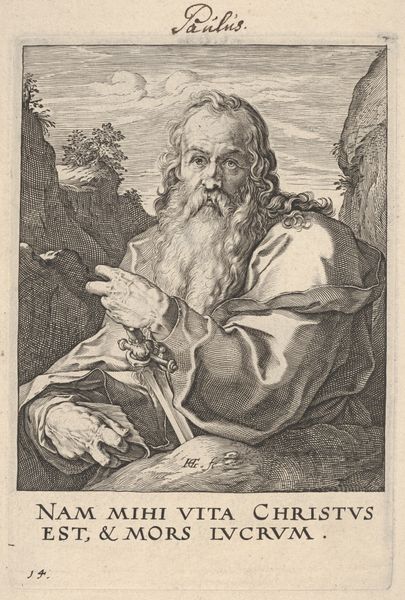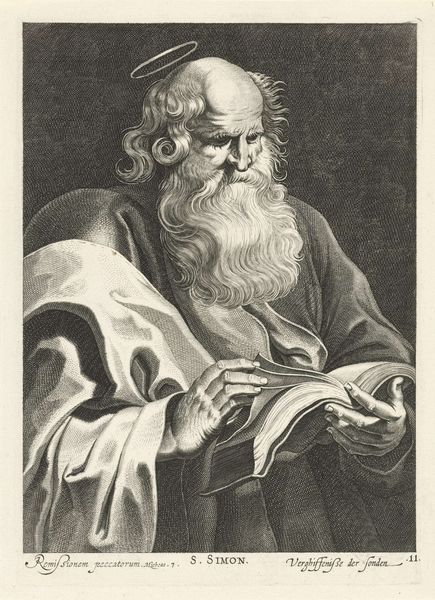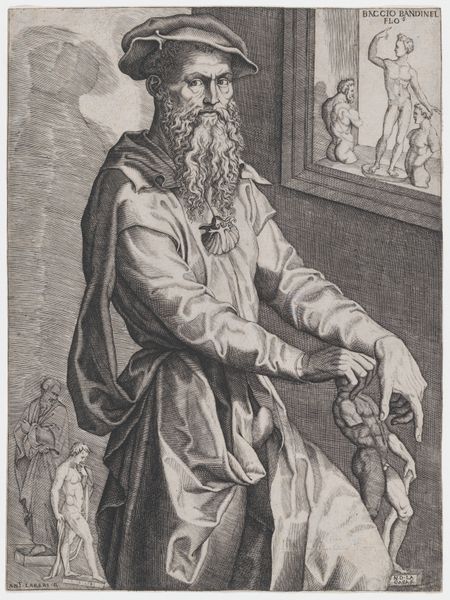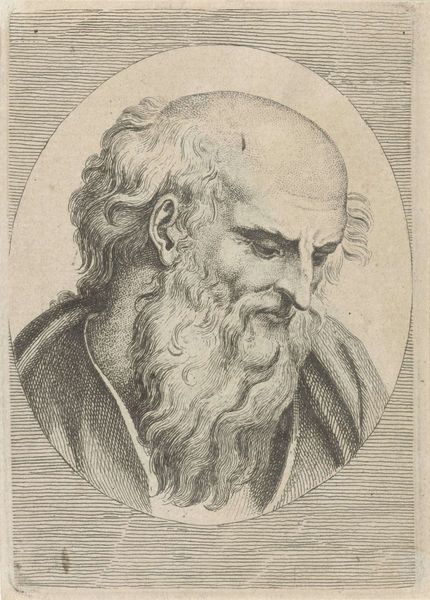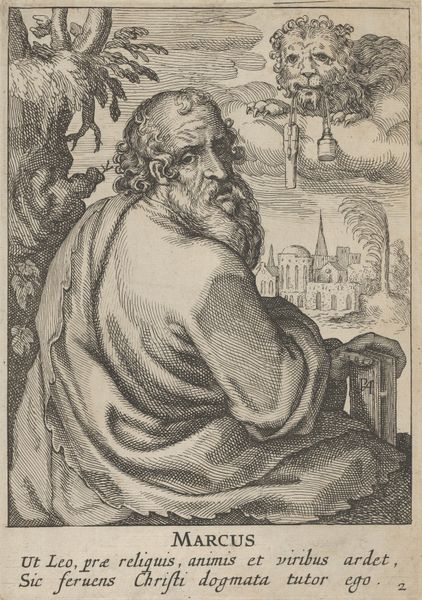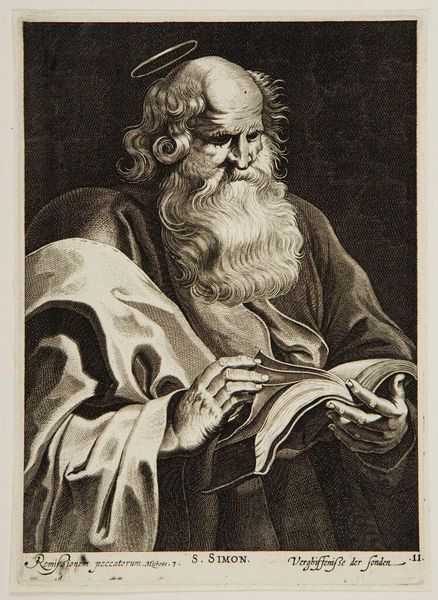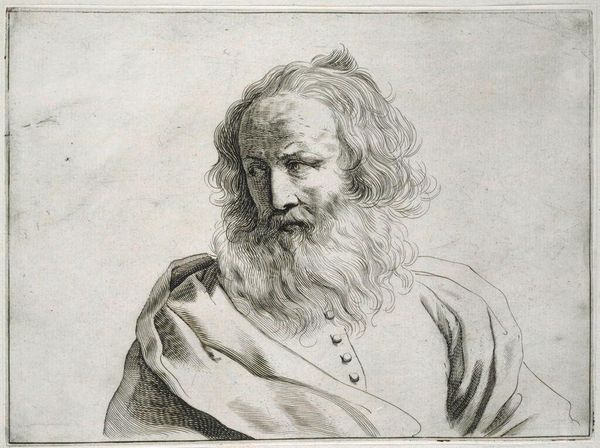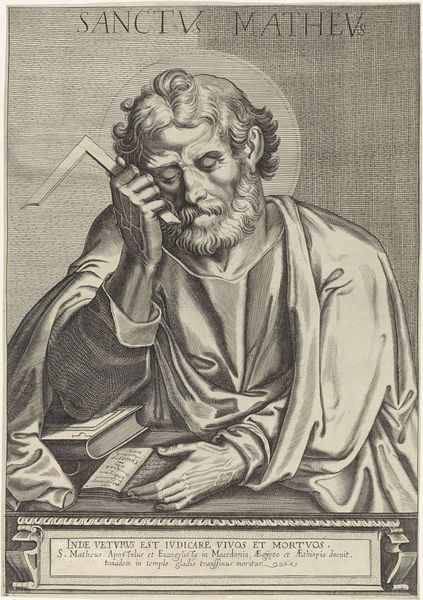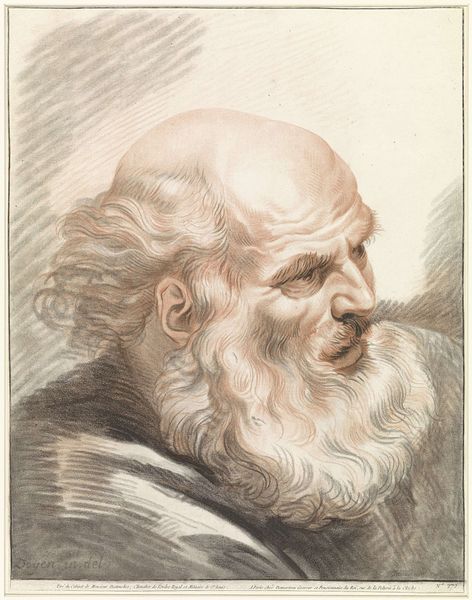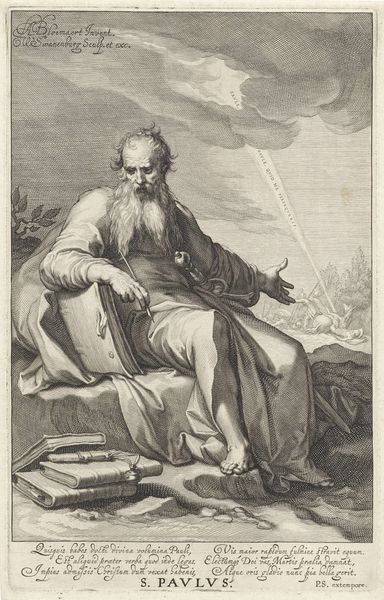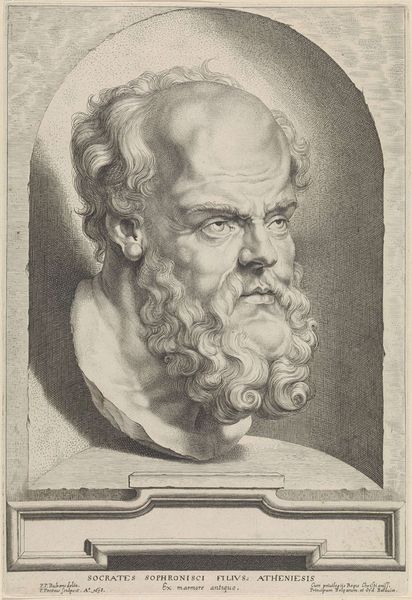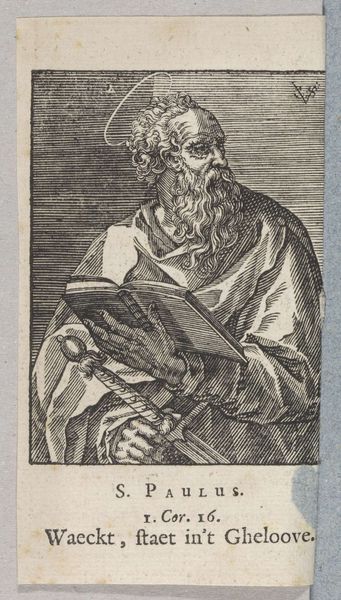
print, engraving
#
portrait
#
baroque
# print
#
portrait drawing
#
history-painting
#
engraving
#
portrait art
Dimensions: height 455 mm, width 318 mm
Copyright: Rijks Museum: Open Domain
Editor: This is Egbert Van Panderen's "Apostel Andreas," dating from around 1590 to 1637. It's an engraving, so entirely monochrome, and quite striking. The level of detail in the apostle's face and beard is really remarkable. How do you interpret this work, focusing on its formal aspects? Curator: I am struck by the masterful use of line and the considered arrangement of tonal values. Note how the artist creates depth and volume not through color, but through the density and direction of the engraved lines. Consider, too, the compositional choices: the saint is framed by the stark diagonal of the cross behind him, drawing the eye back into the pictorial space, and how does that contrast with the soft halo? Editor: I see what you mean about the lines. They really do create a sense of volume, especially in the drapery. The way the light seems to fall on the fabric is amazing. Why include the cross? Is it more about compositional balance? Curator: Indeed, let us explore further. While symbolic interpretations exist, from a formal perspective, the cross serves as a vital structural element. Its angularity sharply contrasts with the curved lines of the figure, creating a dynamic tension that enlivens the entire composition. Ask yourself, would the piece possess the same visual impact without that deliberate contrast in form? What would you say is the primary focus of the piece? Editor: The face, definitely. All those lines really bring out his expression. It's interesting how much emotion is conveyed just through the engraving technique. Thanks, I hadn’t considered it just in terms of pure structure before. Curator: And I find your recognition of emotive linework duly noted, for the close observer appreciates how this piece harmoniously combines detailed artistic planning with the suggestion of great feeling.
Comments
No comments
Be the first to comment and join the conversation on the ultimate creative platform.
